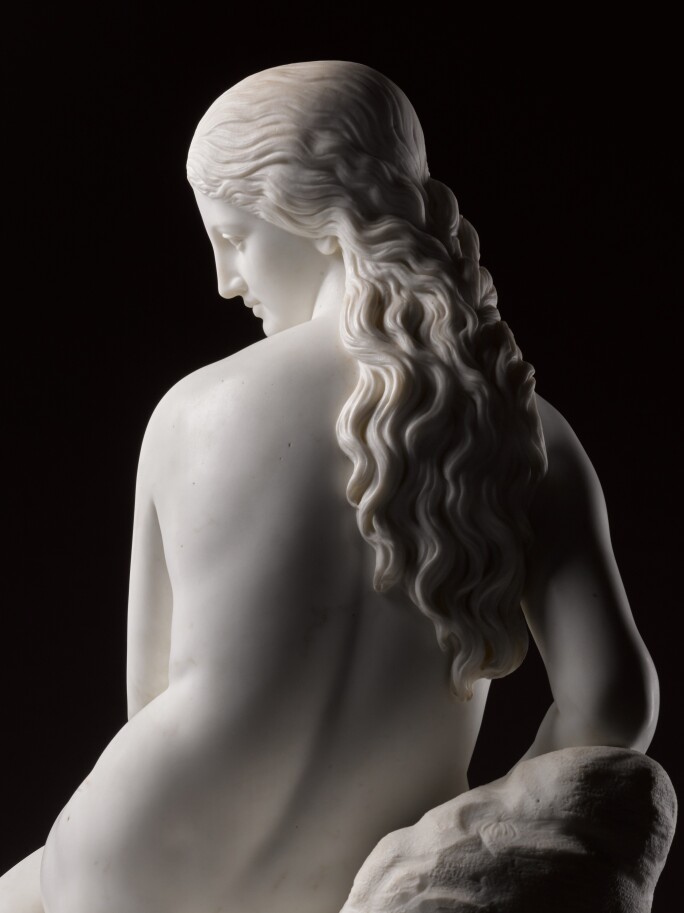
This superb, life-size marble of Eve represents one of the most significant models by the English sculptor John Warrington Wood. Depicted as a seated nude woman with her head turned to the side, she looks towards the serpent at her feet, symbolising temptation. As the only nude in Wood's oeuvre of religious subjects, the sculpture highlights the beauty of the female form, with a classically idealised anatomy and a serene, introspective facial expression.
The original model of Eve was exhibited by Wood at the Royal Academy in London in 1869. Following its success, the sculptor reproduced the model several times in various sizes. The original marble was purchased in 1871 by Sir Andrew Barclay Walker, who later founded the Walker Art Gallery in Liverpool and would become one of Wood's most prominent patrons. Signed 'J. Warrington Wood, Roma', the present, life-size version was almost certainly carved in Rome, where the sculptor had established his studio in 1865. It is likely that the marble was originally commissioned by a British collector or institution. Wood's classical and biblical themes, which resonated with Victorian tastes, were especially admired by English-speaking clients.
Eve epitomises Wood's distinctive style, which blends realistic depictions of the human body with allegorical and religious themes. The figure's finely rendered facial features, soft curves of the body, and careful attention to texture - particularly in the long, wavy hair and smooth skin - demonstrate remarkable technical skill.
John Warrington Wood was a distinguished sculptor celebrated for his significant contributions to Victorian art. Born in Warrington, Lancashire, he studied in London, where he trained as a stonemason, before moving to Rome in 1861. Studying there under John Gibson (1790-1866), he refined his craft and developed a style deeply rooted in classical traditions while incorporating modern sensibilities. To differentiate himself from the sculptor John Wood (1801-1870), he adopted Warrington as his middle name.
Wood is best known for his marble figurative sculptures, often inspired by Graeco-Roman mythology, biblical narratives, and allegorical themes. His mastery of his craft earned him prestigious commissions for churches, public buildings, and private collections. The sculptor spent much of his professional life in Rome, where he immersed himself in classical art and culture, profoundly shaping his artistic approach. His Roman studio attracted the attention of numerous British and European collectors, cementing his international reputation. In 1877, he was elected to the Guild of Saint Luke in Rome. Several of his works are housed in the Walker Art Gallery in Liverpool, including the statues of Raphael and Michelangelo which stand at its entrance.
RELATED LITERATURE
A. Graves, The Royal Academy of Arts: A Complete Dictionary of Contributors and their work from its foundation in 1769 to 1904, London, 1905, vol. VIII, p. 338